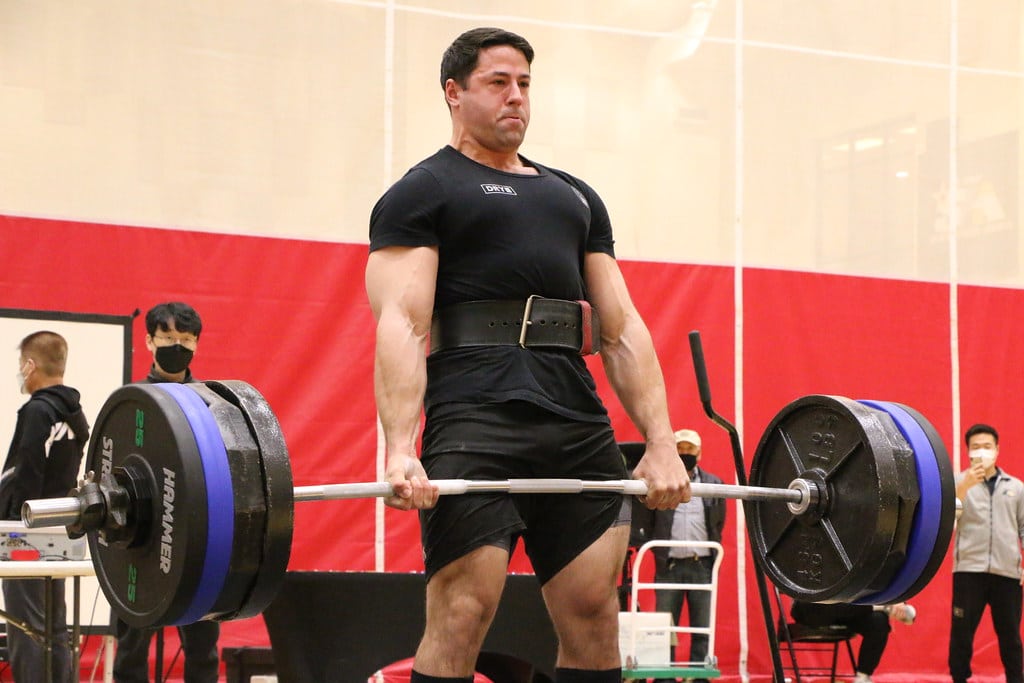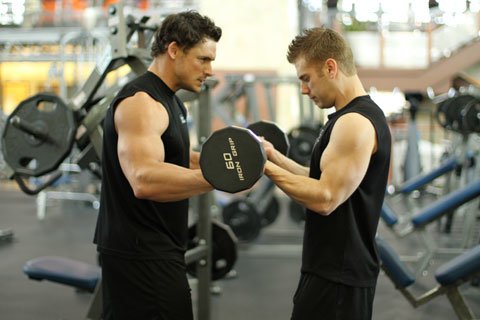Strength training and hypertrophy training are two distinct approaches to resistance training, each with its specific goals and methodologies. While both methods share common elements, their primary focus and outcomes differ. In this article, we are going to delve into the detailed comparison of hypertrophy vs strength to determine which training method is ideal for your fitness goals. First, let’s get started with the key components of both strength and hypertrophy training for better comparison later in this same article.
Strength Training: Definition & Key Components
Strength training, often referred to as maximal strength training or simply “strength training,” aims to enhance the body’s ability to produce force against resistance. The primary goal is to increase the maximum force a muscle or group of muscles can generate, leading to improvements in overall strength. This type of training is commonly associated with powerlifting, Olympic weightlifting, and other sports where maximal strength is crucial. The following are the key components of strength training.

Load Intensity
In strength training, the emphasis is placed on lifting heavy weights relative to one’s maximum capacity. Typically, this involves working at around 80-120% of your one-repetition maximum (1RM) or the maximum amount of weight you can lift for a single repetition of a given exercise.
Repetition Range
The repetition range in strength training is generally low, often ranging from 1 to 6 repetitions per set. Performing fewer repetitions allows lifters to handle heavier weights and focus on pure strength development.
Rest Periods
Longer rest periods are commonly used in strength training to allow for adequate recovery between sets. Rest periods typically range from 2 to 5 minutes to ensure maximum effort during each lift.

Exercise Selection
Compound movements that engage multiple muscle groups, such as squats, deadlifts, bench press, and overhead press, are frequently included in strength training programs. These exercises enable lifters to lift heavier loads and stimulate the central nervous system more effectively.
Training Frequency
Strength training often involves lower training frequencies, with each muscle group trained 2 to 3 times per week to allow for sufficient recovery.
Progression Method
Progressive overload is a core principle of strength training. Lifters continually increase the resistance lifted over time to challenge the muscles and stimulate further strength gains.
Also Read: What is Progressive Overload? Why is it Necessary for Muscle Building?
Hypertrophy Training: Definition & Key Components
Hypertrophy training, also known as bodybuilding-style training, centers on increasing muscle size and volume. The primary goal is to induce muscular hypertrophy, leading to larger muscle fibers and an aesthetically pleasing physique. This training approach is favored by bodybuilders and individuals aiming to build muscle mass. The key elements of hypertrophy training are as follows:

Load Intensity
Hypertrophy training typically involves using moderate to high loads, ranging from 60-80% of 1RM. This load range allows for a balance between muscle tension and time under tension, which are essential for muscle growth.
Repetition Range
The repetition range for hypertrophy training is typically higher, usually falling within 8 to 12 repetitions per set. This range is optimal for stimulating muscle growth through metabolic stress and cellular signalling.
Rest Periods
Rest periods in hypertrophy training are usually shorter compared to strength training. Rest periods commonly range from 30 seconds to 1.5 minutes to maintain elevated metabolic stress and promote hypertrophy.
Exercise Selection
Hypertrophy training incorporates a mix of compound and isolation exercises to target specific muscle groups effectively. While compound movements are still used, isolation exercises like bicep curls and leg extensions are also included to target individual muscles more directly.
Training Frequency
Hypertrophy training often involves higher training frequencies, with each muscle group trained 2 to 4 times per week to maximize muscle growth and recovery.
Progression Method
Like strength training, progressive overload is essential in hypertrophy training. By gradually increasing the weight lifted or volume (sets x reps x weight), the muscles continue to adapt and grow over time.
Don’t Miss: Gain Muscle Fast with these 10 Golden Tips! (For Beginners!)
Hypertrophy Vs Strength: Time for Detailed Comparison!
While both strength and hypertrophy training can lead to improvements in muscular strength and size, their differences lie in their specific goals, intensity, volume, and training methodologies. Here are the key distinctions that you need to know from this battle of hypertrophy vs strength.

Primary Goal
Strength training focuses primarily on maximizing the force-generating capacity of muscles, while hypertrophy training emphasizes increasing muscle size and volume.
Load Intensity
Strength training employs heavier loads (around 80-120% 1RM) to stimulate the central nervous system and increase maximum strength whereas hypertrophy training uses moderate to high loads (60-80% 1RM) to induce muscle growth through constant metabolic stress and cellular signalling.
Repetition Range
Strength training involves lower repetition ranges (1-6 reps) to promote neural adaptations and strength gains. On the other hand, Hypertrophy training employs higher repetition ranges (8-12 reps) to create metabolic stress and stimulate muscle hypertrophy.
Rest Periods
Strength training utilizes longer rest periods (2-5 minutes) to allow for maximum recovery between sets. On the contrary, Hypertrophy training employs shorter rest periods (30 seconds to 1.5 minutes) to maintain metabolic stress and promote muscle growth.
Exercise Selection
Both training styles use compound movements, but hypertrophy training also includes isolation exercises to target specific muscles for greater growth. For example, to grow bicep muscles, you need to perform bicep curls and other isolation exercises for biceps.
Training Frequency
Strength training often involves lower training frequencies (2-3 times per week per muscle group) to allow for sufficient recovery. Hypertrophy training incorporates higher training frequencies (2-4 times per week per muscle group) to maximize muscle growth. This may not look like a big difference but it’s still a difference, right?
Integration and Crossover
In this detailed explanation, we have discussed about hypertrophy vs strength training by comparing their various components. However, despite being distinct approaches, strength training and hypertrophy training are not mutually exclusive. In fact, they complement each other, and many athletes and fitness enthusiasts combine elements of both in their training routines to gain strength and muscle mass at the same time.

Strength-to-Hypertrophy
Individuals seeking to increase muscle size can benefit from incorporating hypertrophy-focused blocks into their strength training programs. By periodically training with higher volume and moderate loads, they can induce muscle hypertrophy without sacrificing strength gains.
Hypertrophy-to-Strength
On the other hand, individuals focusing primarily on hypertrophy can periodically include strength-focused blocks in their training. By working with heavier weights and lower reps, they can enhance their neuromuscular efficiency and potentially improve their strength levels.
Periodization Training
Many advanced training programs utilize periodization, which involves planned variations in training volume, intensity, and frequency. This approach allows athletes to optimize both strength and hypertrophy gains while managing fatigue and avoiding plateaus.
Also Read: Workout Plateau: 5 Proven Methods To Overcome it!

The Bottom Line
In summary, strength training and hypertrophy training are distinct approaches to resistance training, each with its specific goals and methodologies. Strength training prioritizes maximal force production and focuses on heavy loads and low repetitions, while hypertrophy training aims to increase muscle size through moderate to high loads and higher repetitions. However, these two training styles are not mutually exclusive, and many athletes and fitness enthusiasts combine elements of both in their training routines to achieve well-rounded results. Proper program design, periodization, and individual preferences play key roles in determining the most effective training approach for each person’s fitness goals. Hopefully, you have found this article about hypertrophy vs strength training helpful enough. If it’s really so then don’t hesitate to express your valuable thoughts in the comment section below. Thanks for visiting and appreciating our work.
